Do you want to fully understand On-Page SEO and Off-Page SEO? You’re in the right place.
In this post, I will guide you in detail that What is On-Page SEO, What is Off-Page SEO, and What are the essential components of On-Page and Off-Page SEO. Ultimately, you will learn that how these SEO components affect your website and how you can take benefit.
Search Engine Optimization, or SEO, refers to the process of optimizing a website or webpage to rank higher in SERPs(Search Engine Results Pages) like Google, Bing, Yahoo, etc. By optimizing the website’s content and structure, SEO helps to increase the likelihood of the website appearing higher in search results for certain keywords that allows a website to gain more organic or unpaid traffic from search engines.
Overall, SEO helps increase brand awareness, website traffic, and conversions for a business. It requires ongoing efforts in website development, content creation, technical performance, and digital marketing strategy. While search engine algorithms are complex and constantly evolving, focusing on creating high-quality, useful content for website visitors is a core part of long-term SEO success.
Following topics will be covered in the post:
- Difference Between On-Page SEO and Off-Page SEO
- Components of On-Page SEO
- Components of Off-Page SEO
RELATED
- How to Start a WordPress Blog and Make Passive Income
- How to Pick a Profitable Niche for Blogging
- How To Sign Up & Link Website With Google Analytics 4 (GA4)
- What is Dwell Time in SEO & How It Differs from Bounce Rate?
- Best Content Marketing Tools for Beginners
- How to Optimize Your Blog for Voice Search
- Technical SEO for Bloggers Without Coding Skills
01. Difference Between On-Page SEO and Off-Page SEO
On-Page SEO and Off-Page SEO are two fundamental components of search engine optimization that work hand-in-hand to improve a website’s visibility and ranking in search engine results pages (SERPs).
The On-Page SEO focuses on optimizing individual web pages to rank higher on SERPs and drive more relevant traffic to your site. This involves optimizing the site content and HTML source code of a page, including title tags, meta descriptions, header tags, schema markup, images, etc.
On-page SEO also includes internal linking, external linking, user engagement, featured snippets, user experience, and URL structure. It ensures that a website has high-quality, relevant content which is regularly updated, that helps search engines understand the relevance and context of the website.
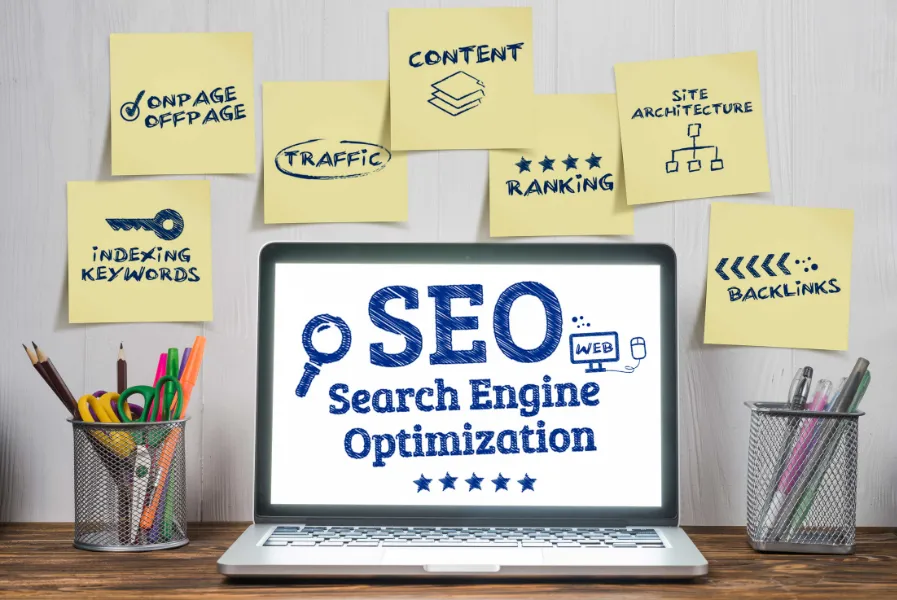
Conversely, Off-Page SEO involves actions taken outside of your own website to impact your rankings within search engine results pages. This primarily relates to building backlinks, which are links from other websites to your website, a critical factor in Google’s ranking algorithm. A robust Off-Page SEO strategy can include social media marketing, content marketing, guest blogging, influencer marketing, link building, and brand mentions.
While On-Page SEO deals with the structural and content aspects of a website, Off-Page SEO primarily focuses on increasing the authority of your domain through the act of getting links from other websites.
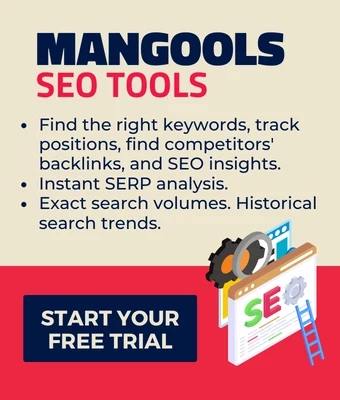
02. Components of On-Page SEO
In this section, I will explain some of the important components of On-Page SEO.
01. Content
Content is the most important On-Page SEO component. High-quality content is paramount; it must provide value, be relevant to the searcher’s intent, and incorporate targeted keywords naturally.
Always create helpful, reliable, and people-first content. It’s important to keep your focus on providing value for people rather than trying to manipulate search engine rankings. Content should be written with the genuine goal of informing, educating, entertaining or otherwise benefiting the end user. The content itself needs to be high quality, useful and engaging for readers.
If the sole purpose of content is to cram in keywords or repeat phrases in hopes of ranking higher in Google, the content will likely fail to resonate with human audiences. Put people first by identifying their needs and interests and create content that speaks to those in an authentic way.
Share knowledge, tell stories, provide solutions, and create things of substance. Don’t let SEO distract from the core purpose of connecting with and serving people through content. When the content is written for people, search engines will recognize the value as well.
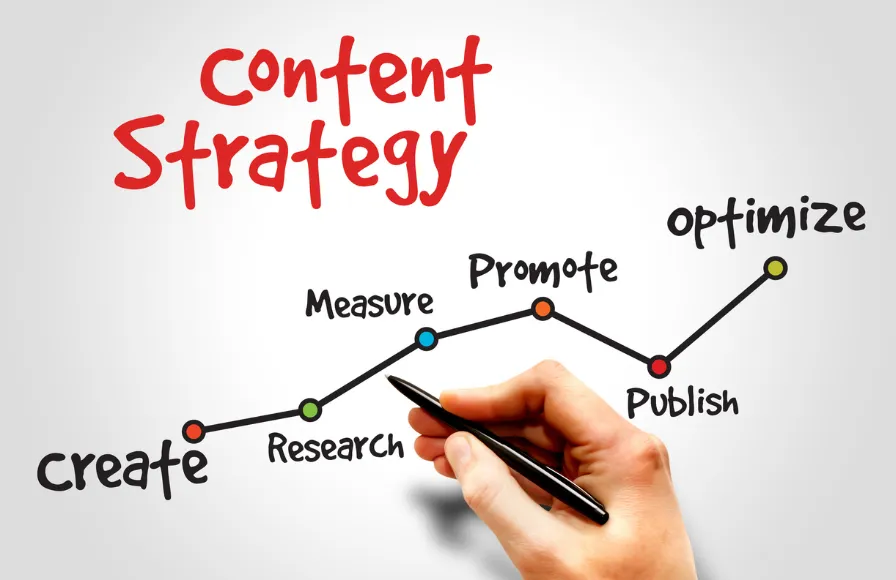
Focus on the E-E-A-T content strategy that establishes credibility and gain the trust of users looking for reliable information online. E-E-A-T stands for Experience, Expertise, Authoritativeness, and Trustworthiness. This concept is important for websites to provide high-quality content and be seen as reliable sources of information.
Websites that demonstrate experience and expertise in their field, show authority on the subject matter, and build trust with their audience are more likely to rank well in search results and attract visitors.
Finally, ensuring content is up-to-date and regularly refreshed can maintain its relevance and ranking over time.
02. Page Title
Title summarizes the content’s topic. It’s important to include relevant keywords that people might use when searching online. Start by identifying the main topic or focus of your content and choose keywords that accurately represent it. Keep your title clear, concise, and engaging to attract readers and search engines. Avoid using vague or misleading titles that might confuse your audience.
In HTML Source Code of a page, the Title is stored between the <title></title> tags.
03. Meta Description
Meta Description offer a brief overview of the page content in the search results. Search Engines such as Google don’t actually use meta descriptions in their ranking algorithms, they serve more as a marketing tool to improve click-through rates. When writing meta descriptions, it’s important to accurately summarize the page content using keywords and phrases searchers are likely to enter.
On Blogger you can add Meta Description of a post from Search Description in Post Editor, and on WordPress the SEO plugins like YOAST provide you the Meta Description field at bottom of the page.
Below are some examples of Meta Description on the Google Search Results. It appears below the Title of a page.
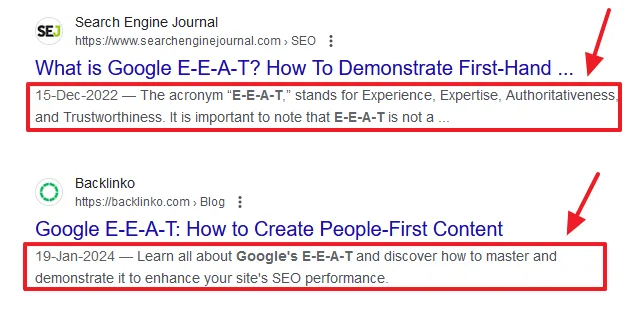
04. Header Tags
Header Tags (H1, H2, H3, etc.) are an important element of On-Page SEO. They help break up blocks of text, making content more readable and scannable for users.
Headings also help search engines understand the topic and hierarchy of the content on a page. When optimizing headings for SEO, you should ensure they contain relevant keywords for that page or section. However, headings should be written for users first, not just to stuff keywords.
In terms of structure, there is a hierarchy of headings from H1 down to H6. H1 headings are the main title or subject for that page. There should only be one H1 per page. Then use H2 headings for major subsections, H3 for subsections under that, and so on. Don’t skip heading levels in the hierarchy. And don’t use too many headings just to manipulate SEO, let the natural structure of the content determine appropriate headings.
Don’t use empty headings or headings with no associated content. For example, listing a link or links under a heading without content is not a good practice.
05. URL Structure
URL Structure is another critical component; URLs should be concise, include keywords, and follow a logical hierarchy. Avoid using complex numbers or symbols in your URLs as they can make it harder for search engines to interpret the page’s content.
06. User Experience (UX)
User experience (UX) refers to how users interact with a website when they visit it. User Experience (UX) plays a significant role in On-Page SEO, with factors like site speed, Core Web Vitals score, mobile-friendliness, and navigability affecting rankings.
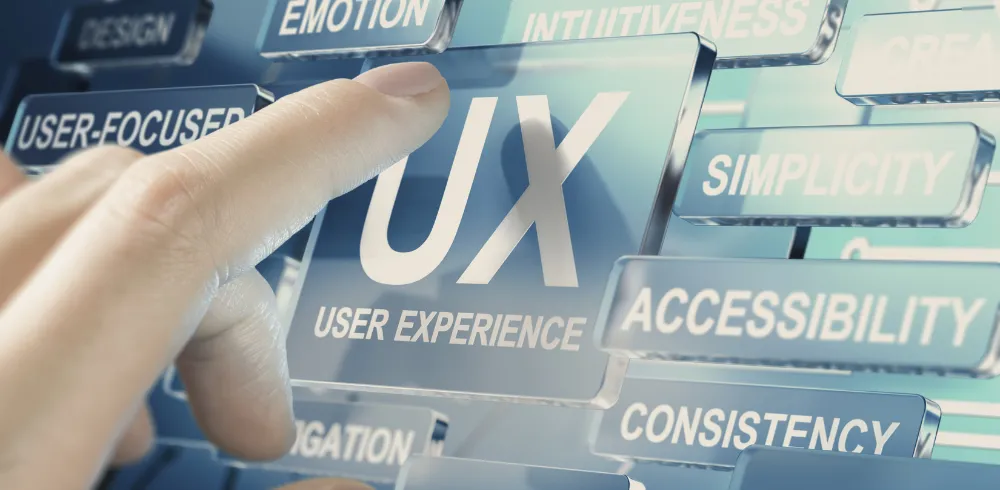
Some key elements of UX design for SEO include:
- Site architecture and navigation – This refers to how the site’s content is structured and how users can find their way around it. An effective information architecture with easy-to-use menus and navigation will enable visitors to access relevant content efficiently.
- Page speed and performance – Fast load times and smooth interactions create a positive experience, while slow-loading pages lead to high bounce rates. Optimizing page speed through techniques like minifying code, compressing images, and caching is critical for SEO. If you’re using WordPress you can use free caching plugins like LiteSpeed Cache to improve page speed and performance.
- Responsiveness and mobile optimization – With increasing mobile usage, having a site that resizes and functions well on all devices is key. A mobile-friendly, responsive site provides a seamless experience.
- Visual design and layout – A clean, uncluttered visual design makes for an inviting experience. Use whitespace, quality images and videos, and readable fonts to enhance engagement.
- Content quality and value – The content itself needs to be high-quality, easy to understand, and provide real value to users. Well-written, relevant, engaging content keeps visitors on pages longer.
07. Images
Optimizing images through proper file naming, alt text, and compression can improve page load times and accessibility, while also providing search engines with context.
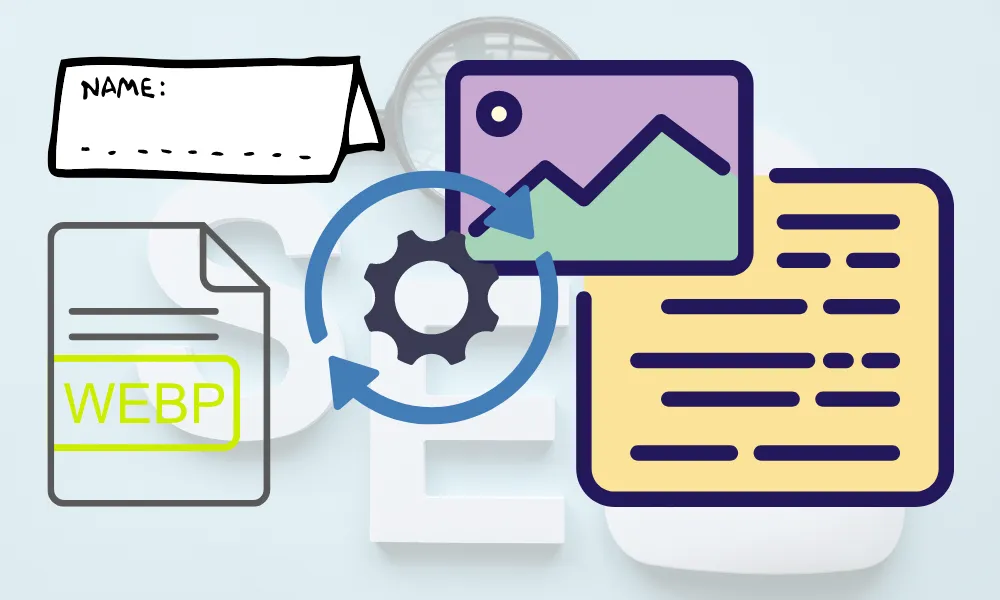
Some key practices to optimize images:
- Make sure image file names are descriptive, keyword-rich and consistent. For example, name an image of a cat “himalayan-persian-cat.jpg” instead of just “image1.jpg”. Use target keywords that are relevant to the content. Keep file names consistent across your site.
- Fill out the ALT text field for each image with a concise, accurate description using your target keyword. The ALT text is read by screen readers for accessibility and search engines when crawling pages. It should summarize the image content and include key search terms.
- Add metadata like title, captions, tags and descriptions to provide more context. Metadata gives search engines additional signals about the image content. Well-written captions and descriptions improve click-through rates.
- Compress image file sizes for faster load times without disturbing quality. Search engines penalize slow-loading pages in rankings. Instead of using traditional image formats such as PNG, JPEG, use next-generation image formats such as WebP, JPEG 2000, etc, that offer superior compression and fast loading.
- Finally, include images in your content to break up text and improve user experience. Images can capture attention and convey information visually. Place them appropriately within your content to support the text.
RELATED
08. Internal Linking
Internal linking is an important On-Page SEO technique that involves linking pages and content within a website together. The goal of internal linking is to create a network of connections that allow users and search engine crawlers to easily navigate through a site.
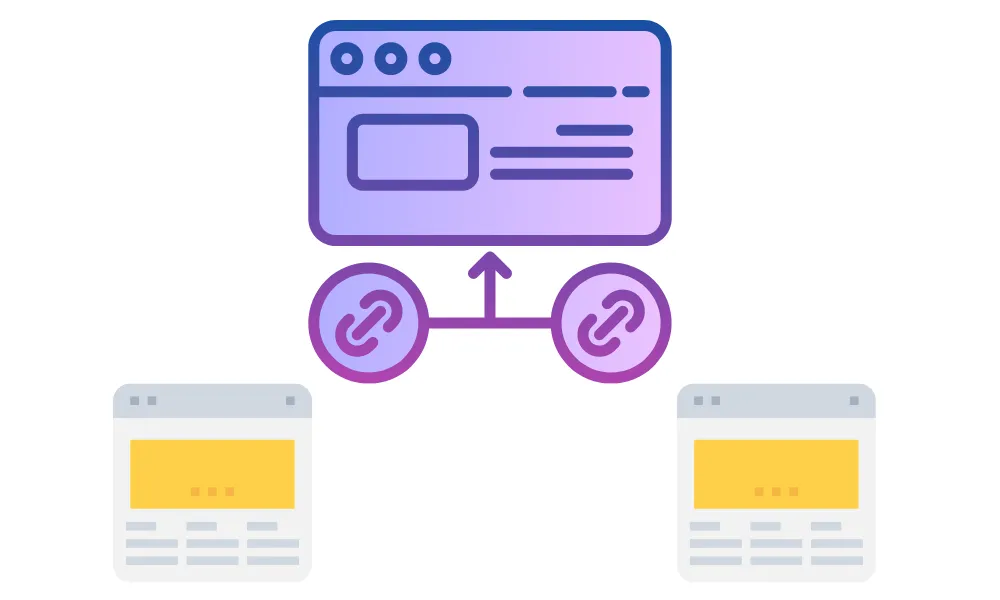
- When implementing internal links, you should identify logical opportunities to link relevant pages and content together. For example, linking product category pages to specific product pages, linking blog posts on similar topics together, or providing “next page” links between paginated content.
- Internal links should use descriptive “anchor text” that clearly indicates where the link will take the user. Overusing generic anchor text like “click here” or “read more” is less helpful for users and SEOs.
- By thoughtfully linking related pages together in this way, a site can boost its ability to rank well in search engines. The links help search bots crawl the site more efficiently and completely. Quality internal linking helps search engines grasp the theme and organization of a website, leading to better rankings for the site’s pages.
09. External Linking
External Linking also known as Outbound Linking, is an On-Page SEO technique that involves linking your pages to relevant reputable & high quality sites or sites pages, that adds value and credibility to your content. It informs search engines like Google that your site provides value to users by directing them to authoritative, relevant resources.
Outbound Links can boost your site’s ranking in search results. They show that your content is comprehensive, as you’ve taken the time to support it with external sources. They also indicate search engines that your site is trustworthy, since respected sites are more inclined to link to other respected sites.
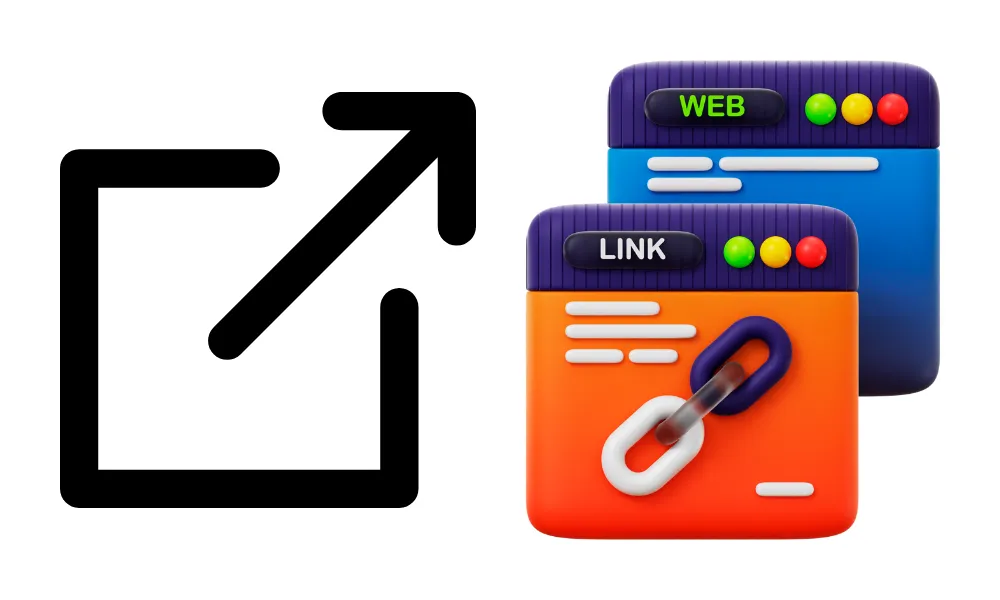
There are several best practices for implementing Outbound Links effectively:
- Link to high-page-rank, topically-relevant sites to add credibility.
- Vary the sites you link to, don’t over-rely on just one or two external sources.
- Link to resources that add value for your readers by expanding on ideas discussed in your content.
- Place links naturally within your content as it flows, rather than just listing links at the end.
- Use anchor text with keywords relevant to the linked page rather than generic phrases like “click here.”
10. Rich Snippets
Rich snippets, structured through schema markup(piece of code in a specific format understandable for search engines), enhance listings in search results with additional information like ratings and prices, which can improve click-through rates.
Users tend to prefer clicking on results that offer more information at a glance, making rich snippets a powerful tool for improving user engagement. Do remember that not all search queries trigger the display of rich snippets, search engines decide when and where to show them based on the query’s context and relevance.
For example, when searching for a recipe, rich snippets can pull the ingredient list, cook time, ratings, etc. and showcase it at the top of the search listing. This gives users more context about the content before they click on the result.
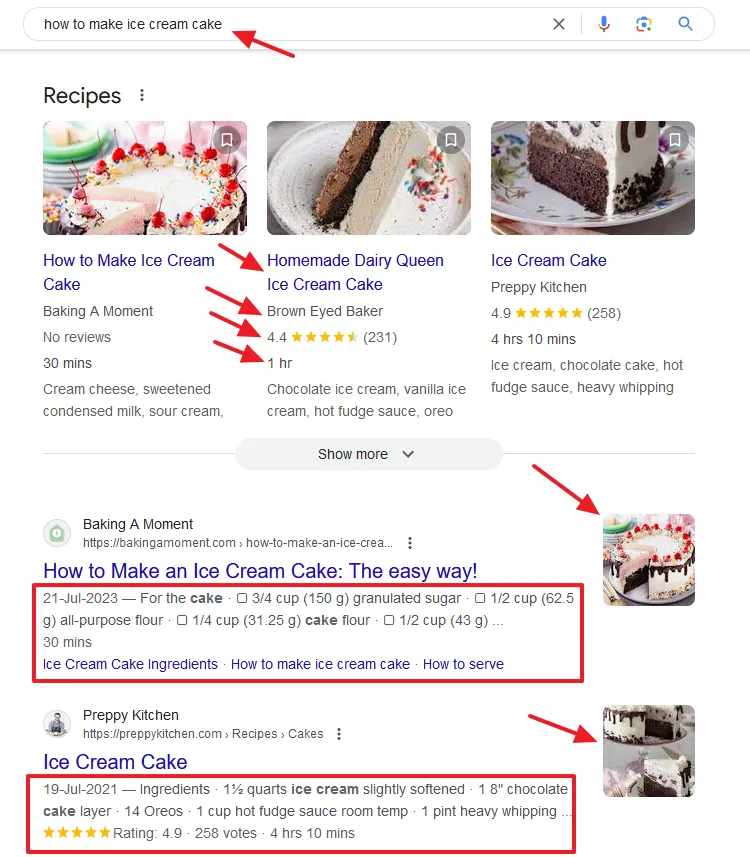
To implement Rich Snippets, webpages need to be marked up with schema.org microdata which uses HTML attributes to categorize and describe the data. The markups such as JSON-LD tells the search engine exactly what each element of the page represents. On WordPress, SEO plugins like Yoast automatically adds schema markup for your site.
Related: How to Add Schema Markup to a Website

03. Components of Off-Page SEO
In this section, I will explain some of the important components of Off-Page SEO.
01. Backlinks
Backlinks are links from other websites pointing to your site. These are one of the key components of Off-page SEO. High-quality backlinks from reputable and relevant sites can significantly boost your site’s search engine ranking.
The more quality backlinks you have pointing to your website, the more authority and credibility search engines like Google will give to your site. This in turn can improve your search engine rankings so your pages show up higher in the search results.
RELATED
- How to Ensure Backlinks are Placed on High Quality Sites?
- How to Know If Backlinks are Helping or Hurting Your Website?
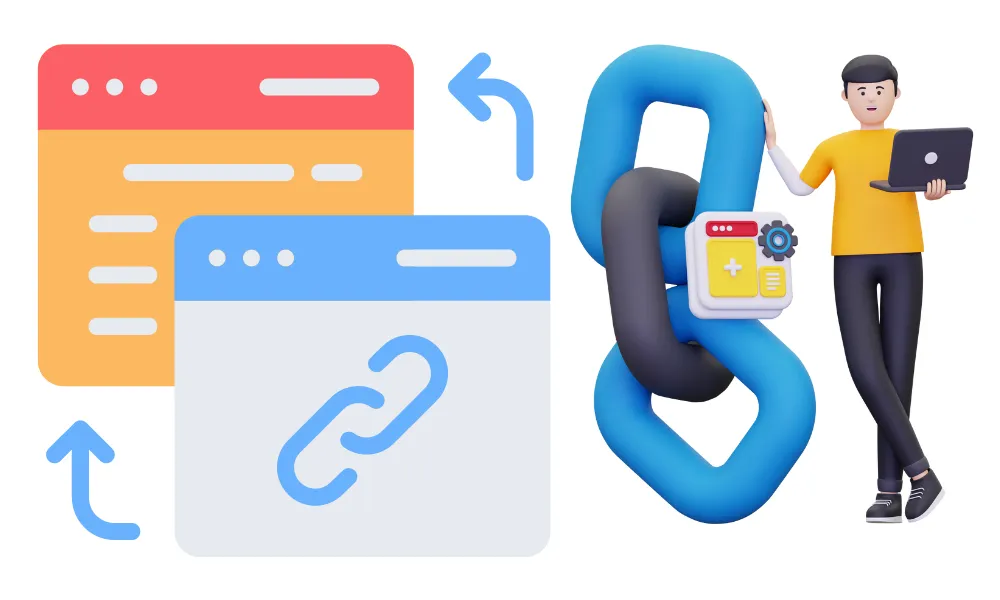
There are a few key things to know about backlinks in SEO:
- Backlink quality matters. Links from authoritative, reputable, high-traffic websites are given more weight than links from spammy or low-quality sites. The relevance of the linking site to your site’s niche also matters.
- Backlink quantity helps too. While quality trumps quantity, having a greater number of backlinks generally helps boost your rankings, as long as the sites linking to you are reputable.
- The anchor text used in the backlink matters. Anchor text is the clickable text used for the hyperlink. If that text contains your target keyword, it passes more relevance and SEO value to your site.
- Backlinks should appear naturally. Links that are paid for, swapped, or appear unnatural can get devalued or even penalized by search engines. The best links come about organically when other sites find your content valuable.
- Backlinks should be built slowly and steadily over time. Avoid any schemes to build a massive number of links quickly, as this looks like manipulation to search engines.
02. Social Media Engagement
Social Media Engagement is an important Off-Page SEO component that involves actively interacting with users and sharing content on various social platforms to boost a website’s visibility and ranking. The goal is to build an audience, encourage engagement, and increase brand awareness organically outside of your own website.
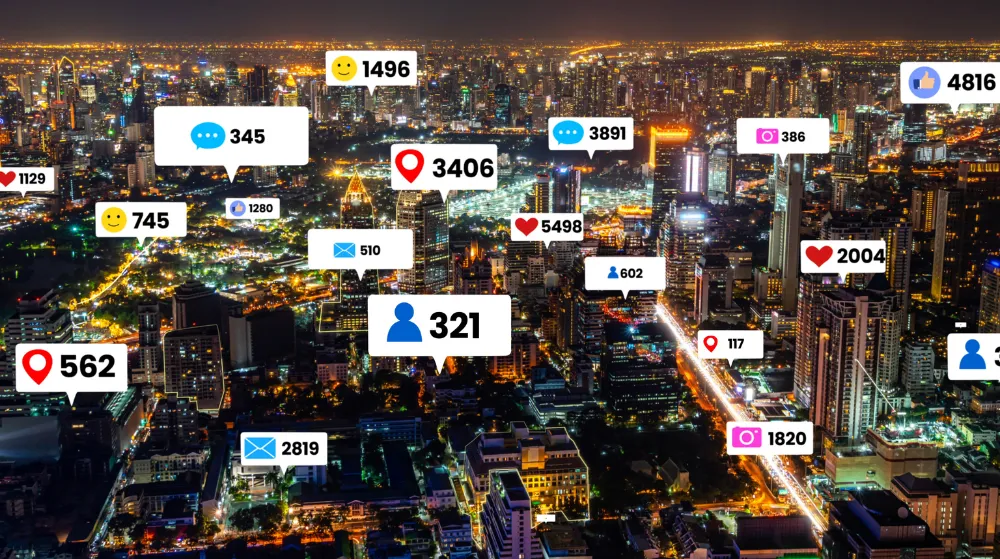
There are several ways to leverage social media for off-page SEO.
- Focus on producing shareable content tailored for each platform like eye-catching visuals and videos for Instagram and Facebook, helpful threads and discussions for forums and Reddit, and shareable quotes and stats for Twitter.
- Engage with followers by liking, commenting, and responding to increase two-way interaction. Utilize relevant hashtags and tag influencers to expand your reach. Share content published on your website to drive referral traffic.
- An effective social media engagement strategy requires consistency, thoughtful content creation, strategic audience targeting, and actively fostering relationships with influencers and followers. The key is to provide value to social media users to drive genuine engagement and discussion around your website/brand.
03. Content Marketing
Content Marketing involves creating and distributing valuable, relevant, and consistent content to attract and retain a clearly defined audience, and ultimately drive them to take action.
An effective content marketing goes beyond just blogging and looks at a variety of formats like videos, podcasts, ebooks, whitepapers, and more. High-quality content that engages the target audience can increase website traffic, improve brand awareness, and boost lead generation.

Strategic distribution of content on external websites, social media platforms and third-party blogs helps expand reach and visibility. Content amplification tactics like guest posting on industry websites, leveraging influencer networks, and promoting content on social media aim to get the content in front of the right target audience.
Measuring engagement metrics provides insight into what content resonates best with the audience. An agile content marketing strategy requires regularly creating and optimizing content based on performance data to maximize SEO impact. The focus is on providing value to the audience first rather than hard-selling the company’s products/services.
Done right, content marketing through thought leadership and audience engagement can be a powerful Off-Page SEO technique.
04. Influencer Marketing
Influencer marketing has become an increasingly popular and effective off-page SEO tactic. The basic premise involves partnering with influencers. Influencers are individuals with a sizable and engaged social media following in a particular niche.
The influencer shares your content, such as a blog post or video, with their audience, often adding their own commentary or review. This not only helps promote your content/brand to a new, targeted audience, but also provides a valuable backlink from the influencer’s social media profile, which can help boost your search rankings.

For example, a food blogger with 50k Instagram followers might share a post about a new recipe from your cooking website. This promotes your recipe to their engaged followers who are interested in cooking content, while also providing a backlink from their Instagram profile to drive traffic and signal to search engines that your site is worthwhile.
The key is partnering with influencers who genuinely like your product/service and have an audience that aligns with your target demographic. It provides a more authentic and effective means of content promotion rather than traditional display ads. When executed strategically, influencer marketing can be a powerful way to expand your brand’s reach and visibility online.
05. Guest Blogging
Guest blogging is another Off-Page SEO technique that involves writing and publishing articles on other websites to build backlinks and increase a site’s authority. By publishing high-quality content on reputable, established sites in your industry, you can earn backlinks that pass link juice and ranking power to your own website.
Guest blogging takes effort to do properly. You need to thoroughly research potential sites, pitch relevant article ideas, write compelling content, and promote the posts. But it can pay off by boosting your site’s search rankings, traffic, and brand visibility.

To maximize SEO value, focus on getting guest posts placed on sites with high domain authority and relevance. Write long-form, in-depth posts that provide unique value for the host site’s audience.
Track guest posting outreach and monitor backlinks to continue improving link building efforts over time. Though time-consuming, but a strategic guest blogging remains a worthwhile endeavor for long-term SEO gains.
06. Local SEO
Local SEO refers to search engine optimization strategies focused on improving a business’s visibility and rankings in local search results. The goal of Local SEO is to attract customers searching for products or services in a specific geographic area to your website and physical location.
An effective Local SEO requires optimizing your website and online profiles across multiple platforms to signal to search engines that you provide services locally.
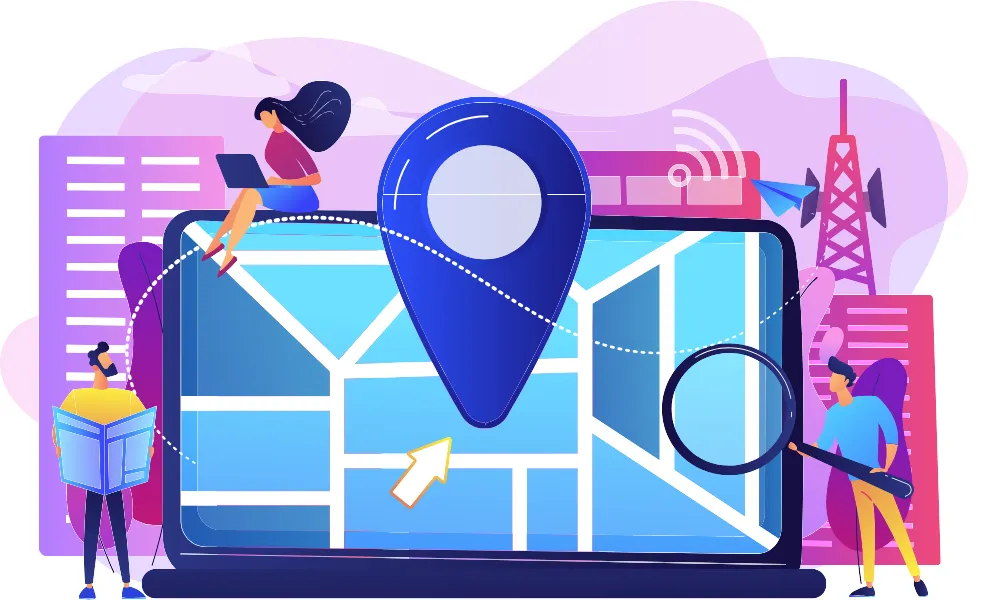
Include your business name, address and phone number in directories like Google My Business, Apple Maps, and Facebook, as well as building local citations and reviews.
On your website, it’s important to optimize pages with relevant, geo-targeted keywords and create location-specific content tailored to your area. Structured data markup for your NAP(Name, Address, and Phone Number), opening hours and offerings help search engines understand your business. Engaging content about your city and region also signals you serve a local area. Tracking geo-modifiers, local rankings and site traffic from local searches helps gauge your local SEO success.
07. Forums
Forums also play an important role in Off-Page SEO. By participating in relevant online forums and discussion boards, you can generate valuable backlinks and increase awareness of your website. When used strategically, forum posting allows you to connect with your target audience, establish your expertise, and get your site linked organically.
The key is to identify forums frequently visited by your ideal customers and provide thoughtful, high-quality contributions. Avoid spamming forums just to get links. Instead, share insights and information that helps forum members. Be sure to include a link to your site in your forum profile, but don’t over-optimize anchor text in your posts.

Interact regularly with other members by commenting on threads and responding to questions. Not only will this lead to more clicks back to your site, it will also help position you as an authoritative voice that people want to follow. Forum moderators tend to look more favorably on active, contributing members as well.
Just make sure to stick to forums that are relevant to your niche. Participating in a football forum won’t help an eCommerce site selling cricket products. But engaging consistently on cricket forums and cricket gear and equipment review sites can be hugely beneficial. When done right, forums allow you to reach qualified audiences, demonstrate expertise, and gain high-quality backlinks through organic community participation.
08. Brand Mentions
Brand Mentions even without a direct link to your website is an important Off-Page SEO strategy for businesses and brands looking to build brand awareness and increase their search engine rankings.
The basic concept involves having a brand name or keywords mentioned on external websites, blogs, forums, directories, and other online properties not owned by the brand. This helps associate the brand with certain topics and signals to search engines like Google that the brand is authoritative and relevant for those keywords.

There are several effective tactics for earning brand mentions:
- Blogger outreach, identifying relevant bloggers and influencers and pitching them ideas for posts that would naturally mention your brand.
- Guest Posting on external blogs in your industry is another way to work in brand mentions while also providing value to readers.
- Participating in forums and communities where your target audience is present, gives opportunities to mention your brand organically in discussions.
- Getting listed and cited on third-party directories and review sites also puts your brand in front of more eyes.
- The key is for brand mentions to occur naturally and add value for readers, overly promotional or forced mentions can seem spammy and ineffective.
09. Reviews and Testimonials
By generating positive reviews and customer testimonials and placing them on high-authority external sites, websites can earn trust signals, social proof, and backlinks. This in turn can boost their domain authority and rankings for relevant keywords.
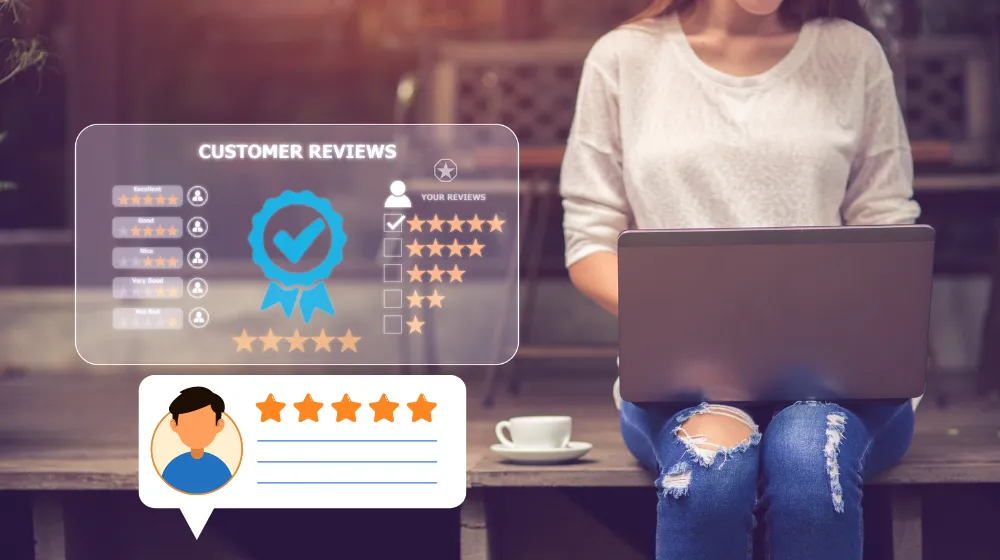
Some effective tactics for leveraging reviews and testimonials include:
- Requesting and collecting reviews on platforms like Yelp, Facebook, and industry forums. Businesses can proactively request customers leave reviews after purchases and interactions.
- Monitoring review sites and responding professionally to feedback shows customers the business values their opinions.
- Highlighting curated positive testimonials on a company’s social media pages and LinkedIn profile provides social proof.
- The most impactful strategy is getting customers to organically share reviews on high domain authority sites related to the business’s industry. A five-star review on a popular travel review site from a satisfied customer carries more weight than testimonials on the company’s own website.
Final Thoughts
Both On-Page and Off-Page SEO are crucial for a website’s SEO success. Without a strong On-Page SEO, a website might not be fully comprehensible to search engines, and without solid Off-Page SEO, the website might not appear as a credible source on the web. Balancing both SEO strategies is key; neglecting one can hinder the effectiveness of the other.
For instance, having strong On-Page signals but weak Off-Page signals can signal to search engines that the content isn’t authoritative or valued by others in the same space. Similarly, having a plethora of low-quality backlinks (an Off-Page factor) can tarnish the reputation of the website, no matter how good the On-Page SEO is.
The evolution of search engine algorithms means that both On-Page and Off-Page SEO strategies must continuously evolve. The goal is not just to appeal to search engines but to provide a great user experience and present valuable content that other reputable sites want to link to.
Ultimately, both approaches aim to build a website’s relevance, trustworthiness, and authority in its subject matter, which in turn helps to improve ranking, visibility, and traffic. Prioritizing both On-Page and Off-Page SEO is critical for any comprehensive digital marketing strategy aiming for long-term success in SERPs.
Also Read
- How To Link Website To Google Search Console | Sign Up
- How to Sign Up & Use Free Google Keyword Planner
- A Complete Guide to Understanding Instagram Insights | Analytics Evolution
- How to Setup Free Newsletter Plugin on WordPress
- Why Does it Take So Long to Get Traffic on New Blogs, Even With Good Content, and SEO?
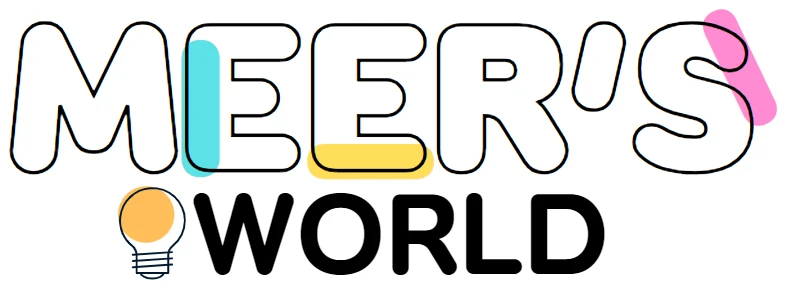
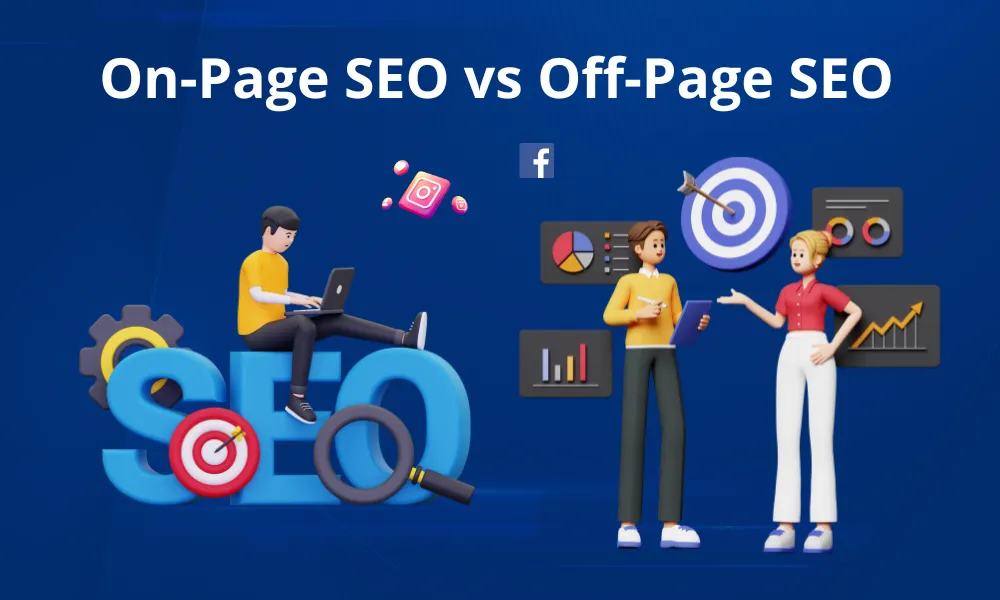
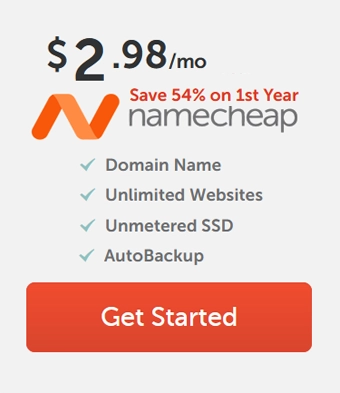
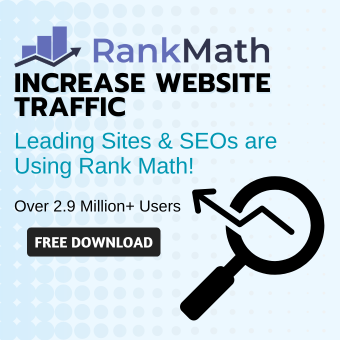
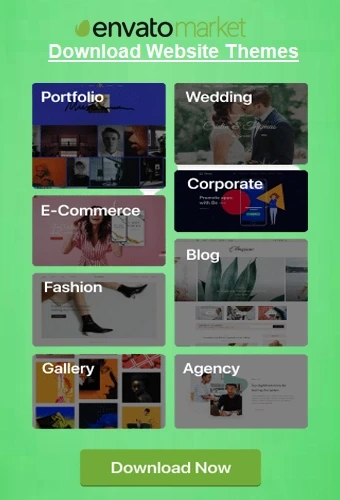
Leave a Reply